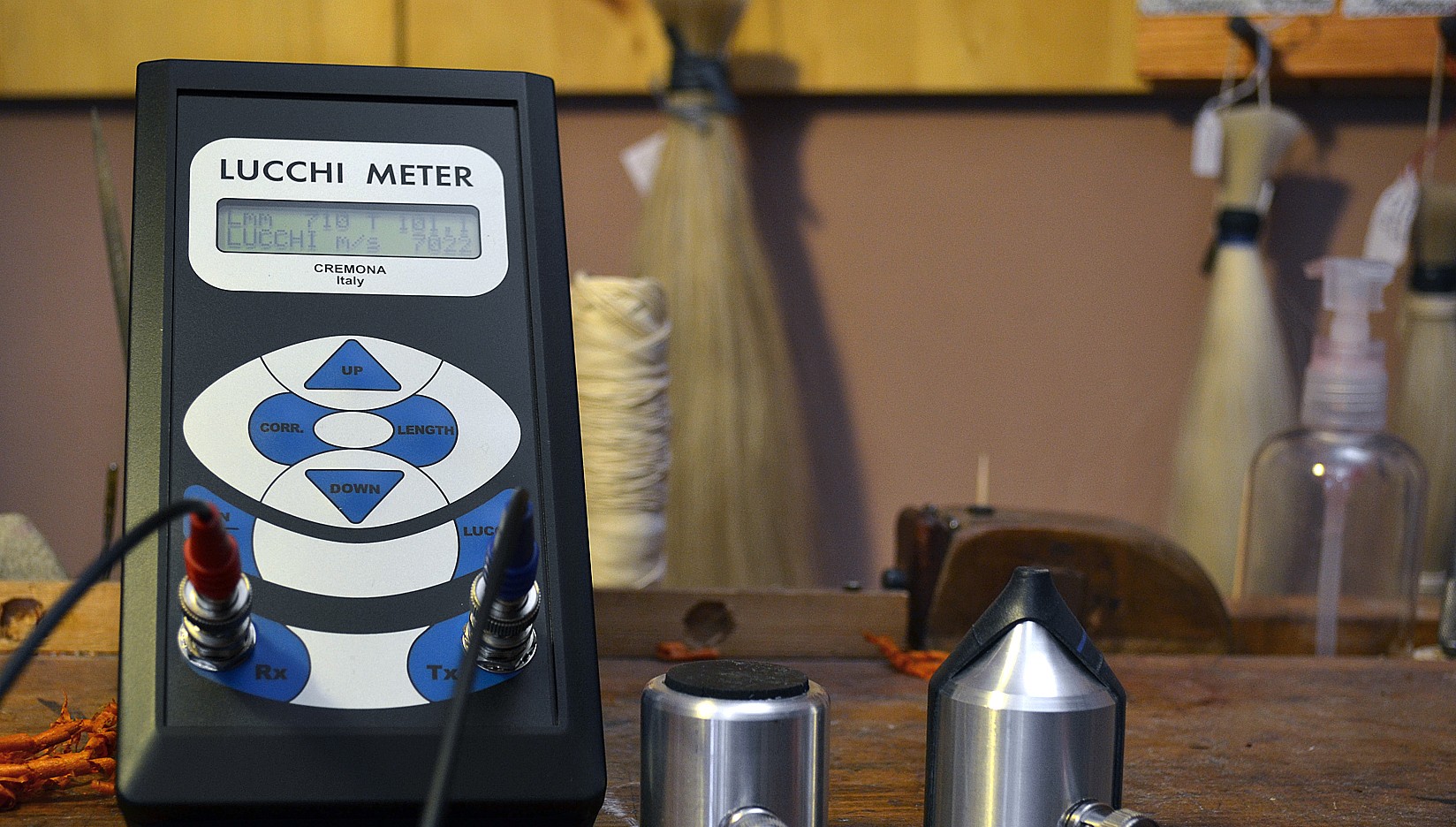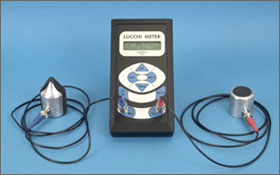Bow makers, like other craftsmen, had merely the beauty of the wood to judge the quality of the materials. The physical and mechanical choice of the wood was determined by tests that were unable to provide any guarantee for positive results (as shown in Figure 9).
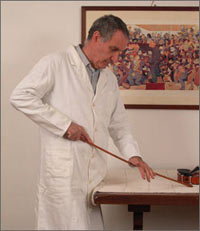 |
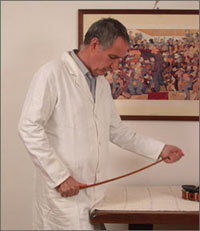 |
|
9) Maestro Lucchi carries out empiric tests on pernambuco sticks
|
|---|
M° Lucchi started with much the same trials and experiments. With the aid of a scale (Photo 10), the obtained results were not satisfactory.
 |
|
10) Test about material force on sticks and tables
|
|---|
The results of this test are uncertain because the Young modulus does not ascertain the sound peculiarities of the wood, but only its force. As already demonstrated, ebony and spruce share the same force, even if their acoustic characteristics differ completely. For a better understanding of this matter, we suggest to think of two weightlifters exerting force in lifting the same weight. (Figure 11)
 |
|
11) Force
|
|---|
At first sight these two men have the same force. However, if we consider the complete picture, (Figure 12) we finally realize that the two ratios of force/weight differ immensely. The first man lifts up the equivalent of his weight, while the second man lifts twice his own weight.
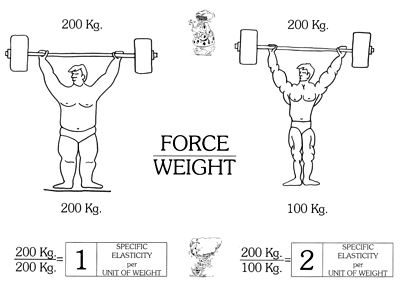
|
The difference between the two men is that the first man uses a static force, with which he may equal the second man by lifting the same weight. If the exercise were related to agility, the first athlete would surely turn out to be the lesser because the second one is using the so called dynamic or “specific force”.
By this intuition, Maestro Lucchi was able to catch the mistake and, thanks to ultrasonics, he succeeded in determining, with scientific correctness, the specific elasticity of the material. In other words, he determined its “specific force”.
Obviously, decreasing the weight by creating a slimmer bow without losing force, makes the bow extremely easy to handle in virtuoso passages. The bow has a fast attack and a powerful sound whenever required. More regular stick vibrations (Figure 13) provide a good grip of the bow on the string, yielding a high sound power in a light weight bow.
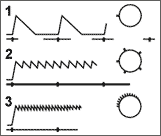 |
|
The high velocity wood produces a clear and pure sound. As we can see in the graph, the responses to an impulse by a low-quality wood affects the sound negatively. (Figure 14)
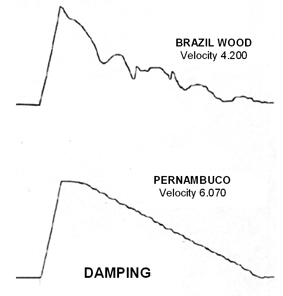 |
|
Knowing the sound velocity may lead not only to a better and surer choice of the optimal material, but also to the most appropriate size for every bow.
It would be reckless to be satisfied with the measurement of the sound velocity of the wood and not to consider that each bow requires a specific plan.
|
|
The misuse of a good material may create a bow that is too stiff or too soft. It is therefore important to use the Lucchi Minipalm Meter (Figure 15) in a proper way. It is necessary to determine which thickness is the most suitable, which size needs to be given to both tip and frog and what are the best working techniques to apply.
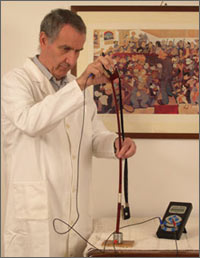
|
With the LucchiMeter (also known as “LucciMeter”) it is possible to check every intermediate working phase (Photo 16). Comparing the elasticity variations from one step to another may help to understand how the material reacts to the different treatments, therefore giving the possibility to intervene and improve them.
Wood measuring is a useful step during restoration as well. With a flawless repair but a disregard for the material used, the bow may have a poor sound but, in the worst case, there is a risk of the bow developing a crack. (Photo 17)

|

|
By using the same wood as that used in the original bow, the sound properties of the bow remain unaffected by the restorer’s treatment. If the work has been completed carefully, (Photo18) the bow will not break again because it will incorporate the mechanical features originally chosen by the maker.
As an example, some years ago, we had a wonderful antique bow that was so well restored that the repair was hardly visible. However, the material used to restore the bow had a very low velocity. Because it was impossible to examine the complete stick, we had to intervene with some in-line probes (Figure 19) that measure only the wood. We needed to know if there was an insert beneath the winding. By discovering the insert, it was possible to execute a proper restoration and return the high quality of the bow’s vibrations.
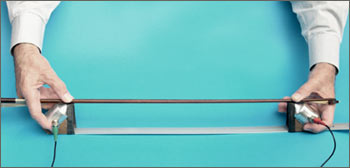
|
This new measuring system is also very important because not all types of windings used on the bow damp the vibrations in the same way. The opening of the mortise at the heel leads to a sensitive value variation.
This is useful if you make new bows but, if you have to make copies of ancient bows, it is an absolute necessity to know exactly what material was used. During restoration we can choose the acoustical and mechanical properties of the original bow, without damaging its winding, by measuring the wooden stick only.
The Lucchi Minipalm Meter is essential also for sellers of antique bows, because they may verify the weakening degree of the bows without necessarily having to play them. With a quick check, it is possible to determine the acoustical level. If older bows have a high value as antiques, they are more valuable if they have a good sound.
